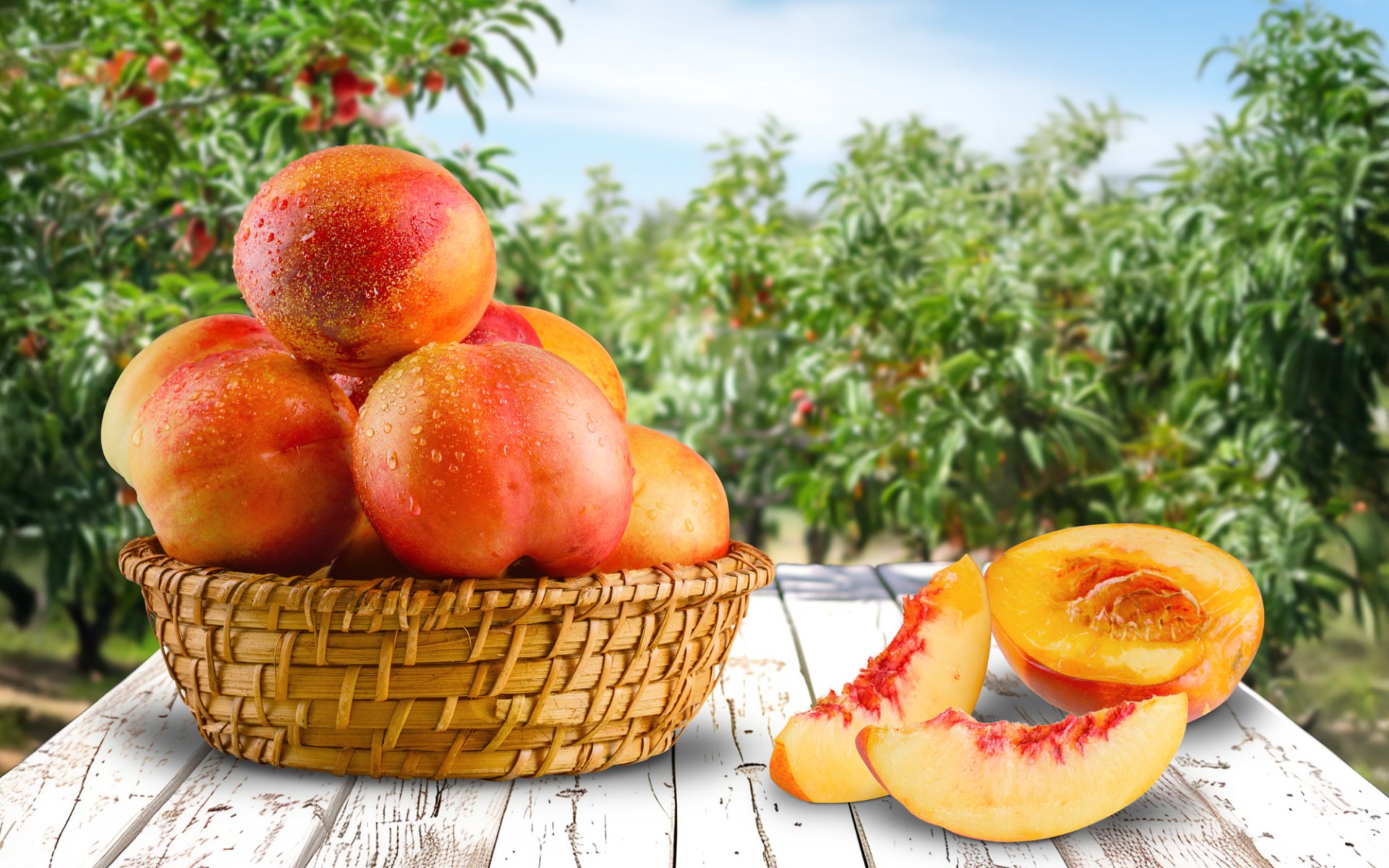Nectarine

Nectarine is a fruit of the same species as Peach, with a very similar appearance: reddish-orange skin, heart-shaped fruit, and white or yellow flesh inside. However, what immediately distinguishes the two fruits is that while a Peach is covered in soft fuzz, giving it a velvety texture, a Nectarine has no fuzz, resulting in smooth, shiny skin. The fuzz on a Peach normally protects the fruit, so Nectarines are naturally more susceptible to insect damage or bruising, and sometimes they also have a more intense red color on their skin.
Furthermore, there are other differences: Nectarines are slightly smaller, and in terms of flesh, Peaches are very sweet and soft when ripe, while Nectarines have a firmer, crispier flesh with a more distinct and tart flavor. In commercial terms today, they are considered different varieties of fruit. Although Nectarine is not as widely known as Peach, its popularity is steadily growing.
A Small Genetic Mutation Makes All the Difference
While Peach consumption has been documented in Chinese history for over 8,000 years, Nectarine's origins are not as clearly recorded, though it is presumed to have emerged after the Peach, based on genetic evidence of both fruits. Despite being the same species and having identical fruit and tree structures, the Nectarine's chromosome differs by only one gene locus. This is the result of a mutation from the Peach, which led to the Nectarine being a fuzz-free fruit.
It is hypothesized that Nectarine spread through trade to Persia before reaching Europe around the same time as the Peach. It is believed that Nectarine was first introduced to Greece in Europe, as its name derives from the Greek word Nectar, meaning drink of the gods, and it held the status of a precious fruit.
The Journey of Nectarine Around the World
Spanish explorers introduced Peach and Nectarine to America during the 16th century (1501-1600), and to England and France in the 17th century (1601-1700). Around the same time, according to evidence found by the Oxford English Dictionary, the word Nectarine was first used in English in 1616 in the book Cheap and Good Husbandry by Gervase Markham, an English writer and translator, which was a manual on rural agriculture and animal husbandry.
Evidence of Nectarine cultivation and consumption appeared in various American colonial newspapers (1607-1775). For example, the New York Gazette (1768) mentioned Nectarine cultivation in the Jamaica community in New York. Over a hundred years later, an American botanist named David Fairchild played a significant role in American agriculture. He introduced over 200,000 new beneficial plant species and improved existing cultivated plants. Nectarine was a development that occurred in 1903 and is one of Fairchild's most notable achievements, alongside kale, mangoes, avocados, dates, soybeans, and pistachios.
Between 1950-1959, in California, which accounts for 95% of Peach and Nectarine cultivation in the United States to this day, Nectarine varieties were developed through cross-breeding with peaches. This resulted in fruit with a tougher skin, making it suitable for transportation. This marked the beginning of Nectarine's increasing popularity and its eventual export worldwide.
Cultivation and Culinary Uses
Although Nectarine trees are specifically cultivated, sometimes Peach trees can naturally produce Nectarines. When this occurs, farmers use grafting methods and careful protection to ensure a harvest and to propagate more Nectarines. Currently, Nectarine cultivation is often done alongside Peach cultivation, as they require identical environmental conditions and care. China, the fruit's origin country, is the world's largest producer of Peaches and Nectarines, and they are also cultivated in almost every country worldwide, including Thailand.
When choosing between Peach and Nectarine for consumption, the softness of the flesh and the flavor are key considerations. Peaches, with their soft and sweet flesh, are often used as fillings or in baked goods, and made into sweet sauces. Nectarines, on the other hand, are commonly baked or grilled whole, as their firm flesh and lack of fuzz are less affected by heat. Fresh Nectarine slices are also popular when frozen to provide a refreshing treat. Additionally, due to their tart flavor, they are often added to salads or made into jams.


